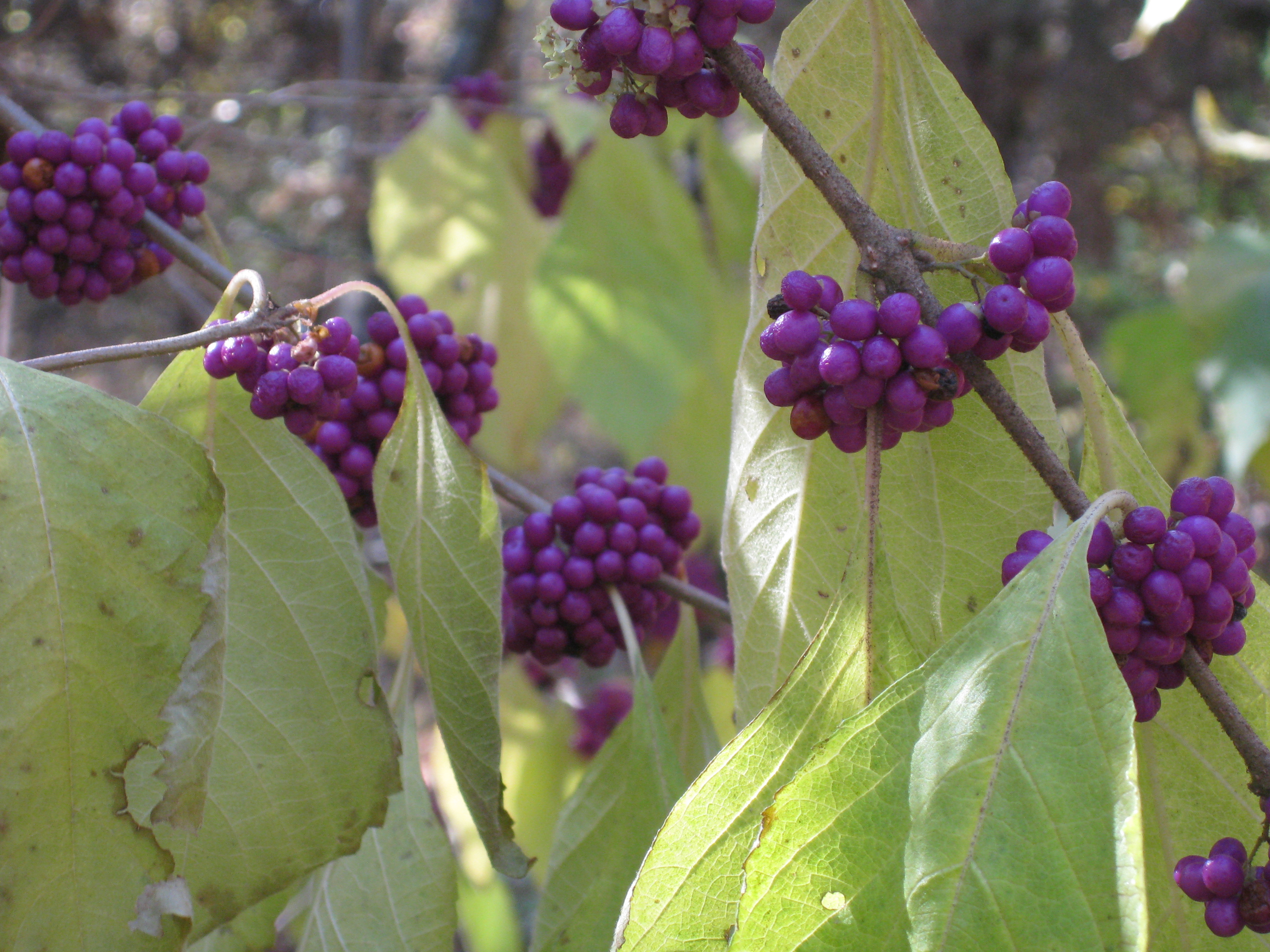French Mulberry on:
[Wikipedia]
[Google]
[Amazon]
''Callicarpa americana'', the American beautyberry, is an open-habitat,
American Beautyberry information
'
 Plants with white berries are found in cultivation under the name ''Callicarpa americana'' var. ''lactea''; not all authorities recognize this as a distinct variety (in the sense of the botanical rank below subspecies).
Propagation can be accomplished by making traditional cuttings; or germinating fully ripened (purple) seeds in pots or growing flats; or by scattering seeds on bare ground in a suitable area and lightly covering them or stepping on them to gently press them into the soil.
Plants with white berries are found in cultivation under the name ''Callicarpa americana'' var. ''lactea''; not all authorities recognize this as a distinct variety (in the sense of the botanical rank below subspecies).
Propagation can be accomplished by making traditional cuttings; or germinating fully ripened (purple) seeds in pots or growing flats; or by scattering seeds on bare ground in a suitable area and lightly covering them or stepping on them to gently press them into the soil.
American Beautyberry infoUSDA Plants Profile
{{Taxonbar, from=Q151067 americana Flora of North America Insect repellents Plants described in 1753 Taxa named by Carl Linnaeus
native
Native may refer to:
People
* Jus soli, citizenship by right of birth
* Indigenous peoples, peoples with a set of specific rights based on their historical ties to a particular territory
** Native Americans (disambiguation)
In arts and entert ...
shrub
A shrub (often also called a bush) is a small-to-medium-sized perennial woody plant. Unlike herbaceous plants, shrubs have persistent woody stems above the ground. Shrubs can be either deciduous or evergreen. They are distinguished from trees ...
of the Southern United States which is often grown as an ornamental Ornamental may refer to:
*Ornamental grass, a type of grass grown as a decoration
*Ornamental iron, mild steel that has been formed into decorative shapes, similar to wrought iron work
*Ornamental plant, a plant that is grown for its ornamental qua ...
in gardens and yards. American beautyberries produce large clusters of purple berries, which birds and deer eat, thus distributing the seeds.
Uses
The raw berries, while palatably sweet, are suitable for human consumption only in small amounts, because they are astringent. Some people have reported mild stomach cramps after consumption. The berries are also used in jellies and wine. The roots are used to make herbal tea. As a folk remedy it has been claimed that "fresh, crushed leaves of American beautyberry, ''Callicarpa americana'' ... helped keep biting insects away from animals such as horses and mules". A chemical compound isolated from the plant,callicarpenal
Callicarpenal is a terpenoid that has been isolated from plants of the genus ''Callicarpa'' (beautyberry). It acts as an insect repellent against mosquitoes (''Aedes aegypti'' and '' Anopheles stephensi'') and fire ants. It also has activity ...
, was effective as a mosquito repellent in a laboratory experiment using a simulated skin model.
The berries ripen in September through October and are a favorite among wild bird species including cardinals, mockingbirds, finches, woodpeckers and more. Beautyberry is commonly planted in landscape designs to attract wildlife because of the food source the berries provide and the cover animals get from the shrub itself.
Distribution
The native range of ''C. americana'' extends from Maryland to Florida, west to Texas and Arkansas, and also Mexico, Bermuda, the Bahamas and Cuba.American Beautyberry information
'
Characteristics
References
External links
American Beautyberry info
{{Taxonbar, from=Q151067 americana Flora of North America Insect repellents Plants described in 1753 Taxa named by Carl Linnaeus